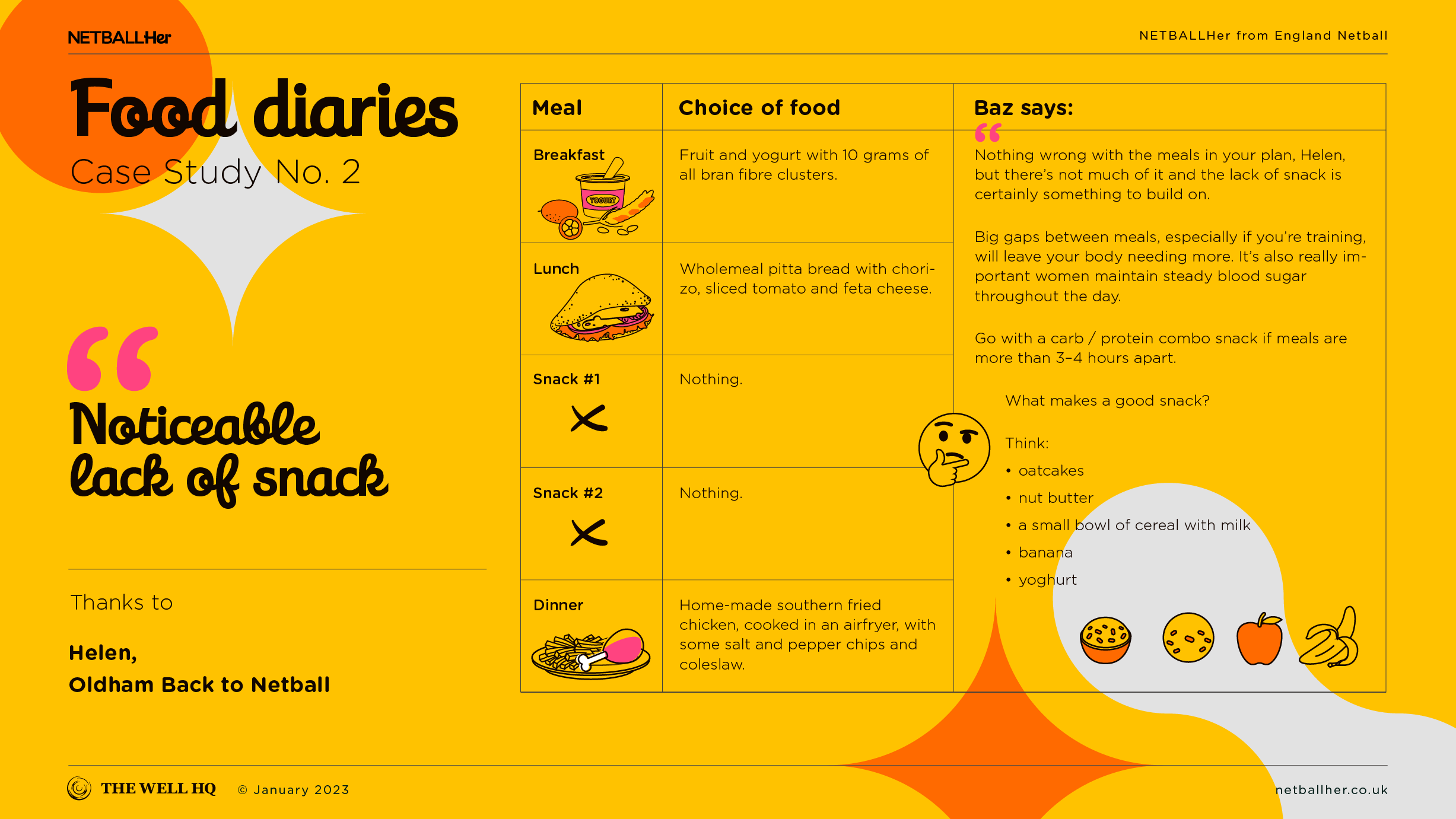Click play for an audio readthrough of this article
When RED-S first surfaced many deemed it a fancy term for fatigue … but it’s so, so much worse than that
By now perhaps you know RED-S stands for Relative Energy Deficiency in Sport. It’s particularly common in active females and is generally caused by undereating, overtraining or (more likely) a combination of the two. It can also crop up during and after periods of considerable stress and emotional upheaval.
In layman’s terms, RED-S creeps in when the body doesn’t have enough fuel over a sustained period of time. When calories-in are consistently insufficient to cover energy spent via exercise and physical activity then the body gets locked in an energy deficit and a range of serious problems await.
When RED-S first hit the sporting agenda, many assumed it was a fancy term for fatigue and being run down. But in the handful of years since RED-S went more mainstream, we’ve made rapid progress in better understanding it, and now know it’s so much more …
RED-S consequences can and do register up and down the entire body. They can affect a person’s physical, psychological and emotional health systems and, as if it needs to be said, seriously degrade the sufferer’s sporting performance.
Symptoms include (but are not limited to)
- Weight loss or being underweight
- Periods becoming irregular or stopping altogether
- Recurrent illnesses, e.g. colds and flus
- Decreased sports performance
- Delayed / disordered growth or development (in children and teenagers)
- Iron deficiency
- Early onset osteoporosis (weak and crumbly bones)
- Mood changes
- Mental health conditions (e.g. depression and anxiety)
As you can see, beyond the physical turmoil it’s also common that RED-S sufferers experience significant mental health challenges. If you catch any of these RED-S red flags in yourself or peers then please don’t dismiss it.
Why such widespread damage?
The human body has some basic survival instincts which kick in when there’s a problem. If a female body recognises it doesn’t have enough fuel on board, it makes a decision to preserve fuel by slowing down (and eventually shutting down) systems that aren’t 100% crucial for survival. The reproductive system, for example, is more expendable than, say, the cardiovascular system so your body, in survival mode, robs Peter to pay Paul.
As the body winds down the reproductive system, the sufferer may notice their menstrual cycle is more erratic; that their periods are heavier, more unpredictable, or they stop altogether. This can continue for months or longer.
It’s a bit of a shocker this needs to be said, but having no menstrual cycle is not a good thing. It is not something to aim for, even if a doctor or coach tells you it’s harmless. In the context of sport, this message still gets through.
The menstrual cycle is in fact one of the best windows a female has to chart her overall health. If it goes wonky it’s usually an early tell-tale that something bigger ain’t right. So if you notice such changes in your cycle then please look at your training and diet ASAP. Consider eating more and / or doing less until you have more information, and use the EA calculation below to help guide you on the calories you need each and every day.
We’ve focused a lot on the reproductive system, but it’s one of several ‘expendable’ systems the body dials back when it’s in survival mode. Others on the hit list are the immune, metabolic and digestive systems and shutdown follows a similar path: first it wabbles, then it splutters, then it goes offline.
Cue symptoms in the list above … and others to-boot.
Who’s at risk?
Anyone can suffer RED-S but it’s comparatively uncommon in males compared to females. Women are so much more sensitive to energy availability as we need consistent energy to fuel basic body and hormonal functions. Hence women who tear through a lot of energy are at a much greater risk than the general population.
Female athletes are most at risk, but you can double down on that statement in sports where bodyweight is, or is perceived as being, an asset or a determinant in success. In some athletic sports, coaches and athletes believe that lighter is faster, which it is … until it isn’t.
RED-S also bites hard in sports or activities where perhaps speed doesn’t matter, but aesthetics do. Think dance or gymnastics. In one study, 100% of a group of cheerleaders were found to have several red flags for RED-S. Yes, 100%. Every single one of them.
We’ve spent the last few paragraphs focusing on women motivated by size, for one reason or another, but it’s important to note that RED-S sufferers may not appear overly thin. They may not even think they are underfuelling.
See, RED-S can happen unintentionally, too. It can happen if an uptick in training intensity isn’t matched with additional nutrition. Or if you start cycling to work, say, and don’t load in extra calories to support that exertion on top of your business-as-usual.
So the punchline is that all women should be wary of RED-S. If it’s not you, it could easily be someone close by.
Your energy availability
To figure out if you’re consuming sufficient calories to support your training, you can calculate your energy availability (EA).
Ideally, you want an EA of 45. If it’s below 30 for too long you’re into risk territory.
Calculating your EA gets a little clunky but it’s well worth doing to assess where you’re at:
- Calculate your daily energy intake in kcal, based on the food you eat. You’ll likely have to use an app to record what you eat, and this will calculate your total calories consumed in a day.
- Calculate your fat-free mass (FFM) by multiplying your bodyweight, in kg, by your body-fat percentage, which is measured using a skinfold test or bioelectrical scales. You should be able to get your body fat measured by your doctors, at the gym or by using home scales with this feature.
- Calculate the energy you expend during your training or exercise in kcal (for this you’ll need a smart watch, heart-rate monitor or fitness tracker).
- Subtract the energy you expend in kcal during your training from your energy intake in kcal.
- Divide this number by your FFM to get your EA.
Example EA calculation
A woman’s bodyweight is 60kg and she has 20% body fat.
She therefore has 12kg of body fat (60 x 0.20 = 12), so her
FFM is 60 – 12 = 48kg.
Her energy intake is 2800kcal per day.
Her exercise energy demands are 800kcal per day.
Her energy availability, or EA, is therefore (2800 – 800 = 2000) ÷ 48 = 41 kcal/kg FFM per day.
The final word on RED-S
RED-S is far too prevalent among active girls and women. Coaches, teachers and athletes all need to know it is a clear and present danger, not just to one’s sporting performance but their overall health, now and in future.
Opening up RED-S may be easier said than done because such conversations will likely centre on a female’s weight and / or food intake and those can be particularly emotive subjects.
So when broaching such conversations, language is hugely important. Women and girls need to feel that their shape or size is not being judged or insulted. Sensitivity and being brave, are key.
Coming at this from a place of knowledge is also essential, and with that girls need more info on the power of food (and the peril of insufficient food) from the earliest age possible.
Gyms, workplaces, changing rooms and training facilities anywhere need to think seriously about broadcasting the signs and symptoms of RED-S to help the majority to question their relationships with food, training and body shape and plant seeds to change society’s problematic views on women, shape, aesthetics and health.
Shields against RED-S:
- Eat a balanced diet
- Eat regularly throughout the day
- No fasted training or long periods without food
- Get your diet as good as it can be before you supplement
- Arrange things so you have good access to the right food at the right time
- Understand the signs, symptoms and consequences of under-eating / over-training
- Read and re-read this article
- Be part of a culture that sees food as fuel, which is not to be restricted in unhealthy ways
- Lead by example and be a role model for those around you
A note on eating disorders
If you suspect you have RED-S, it doesn’t necessarily mean you have an eating disorder. Eating disorders can be caused by a broad range of factors – social, physical and emotional ones – and are, unfortunately, too complex for the scope of this article.
But if you feel you have an unhealthy relationship with food and / or your body image, know that you’re not alone and support is available.
Clinical dieticians are trained to support people with eating disorders and the earlier you reach out for help the better. Confide in a trusted friend and please tag in a professional as soon as you can.
As a reminder, the content of the course belongs to The Well HQ. You have permission to access and use the content yourself or, if you are an organisation, for the number of users selected, but are not otherwise permitted to share such content with others, all in accordance with our Course Terms and Conditions.

